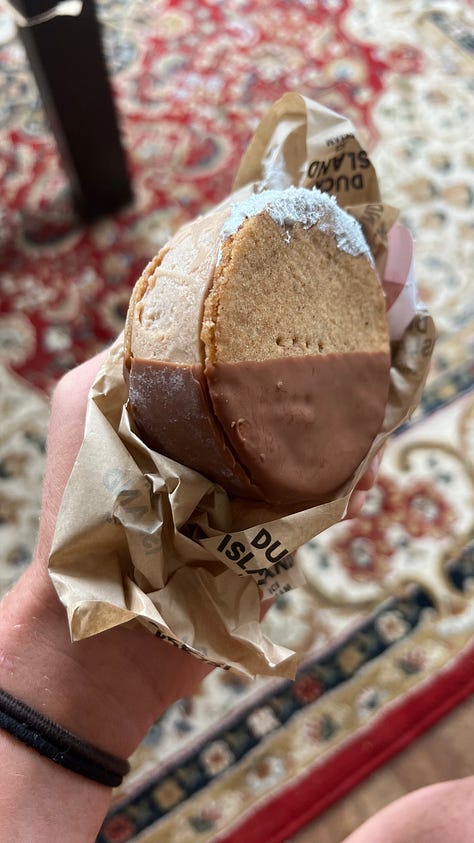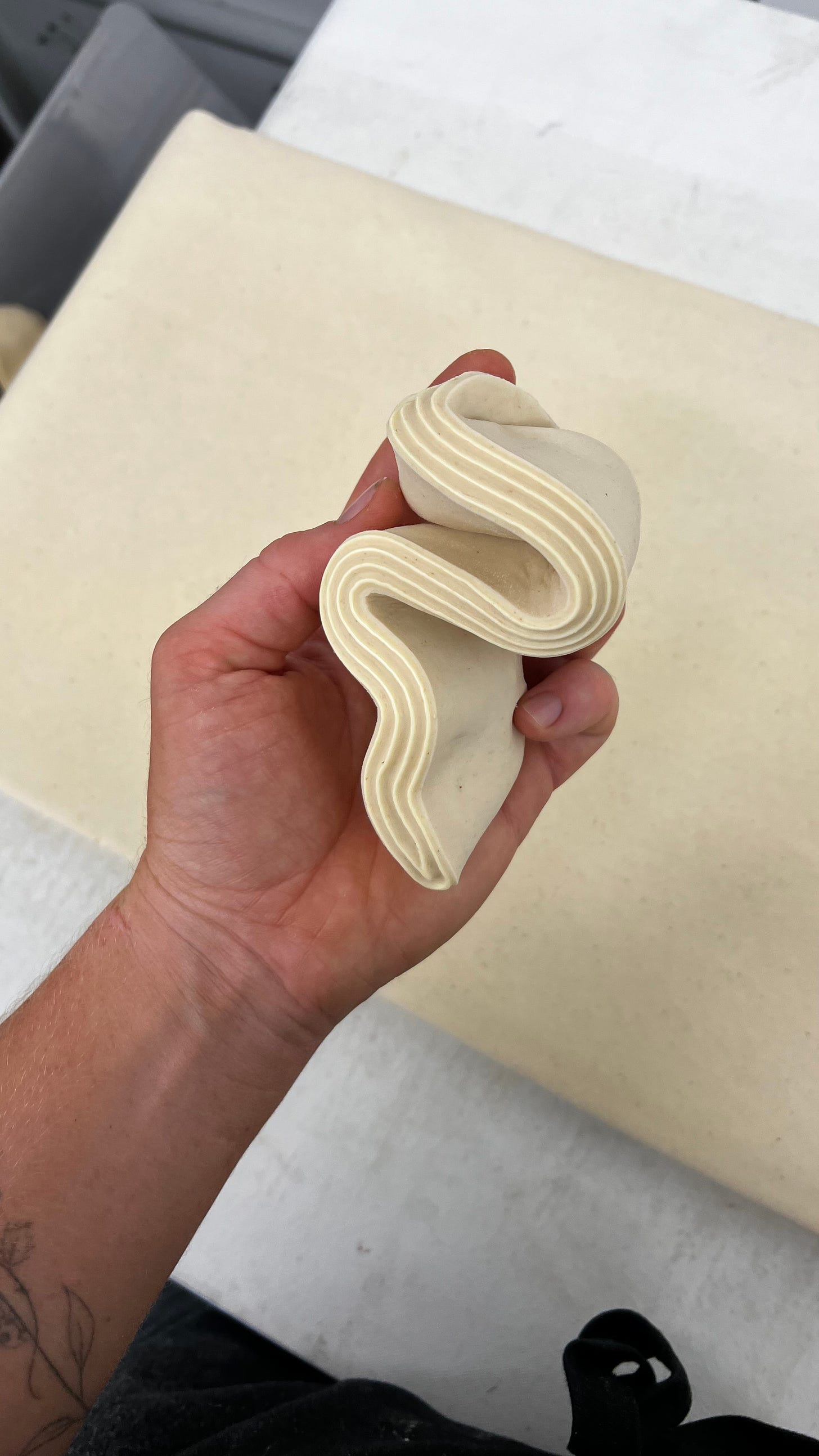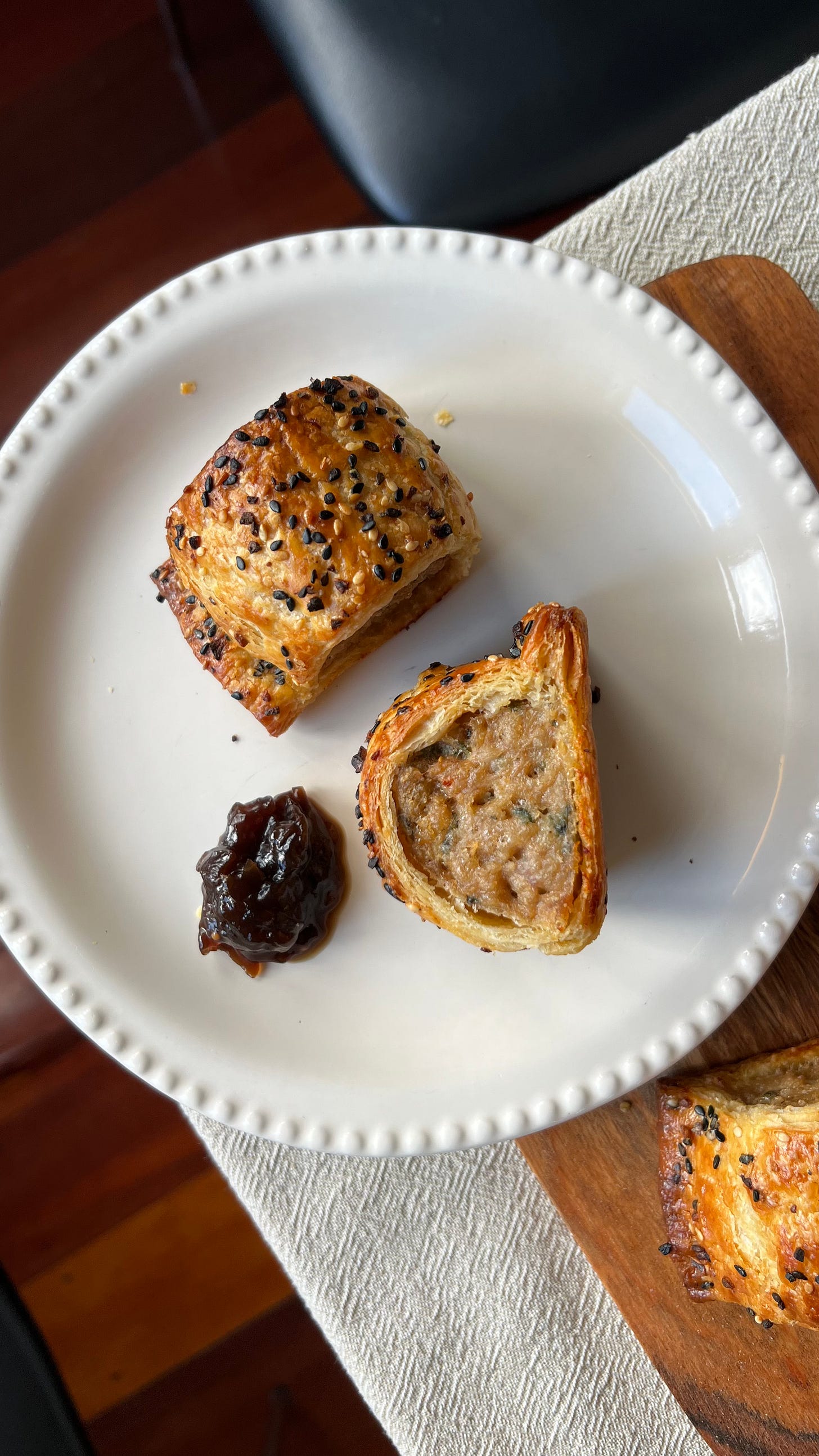What I’m reading: The Queen of Dirt Island, by Donal Ryan. I love how Ryan depicts rural Irish life, and this book is no exception. Highly recommend
What I’m listening to: Your Man, by Josh Turner. I have no explanation for this one, it’s just been playing on a loop this week
What I’m eating: Duck Island. Actually, I’ve been eating Duck Island ice-cream since I arrived in Auckland, but some of my favourites are pecan butterscotch, coffee chocolate rubble and malted chocolate and potato crisps. I also tried some of the ice-cream sandwiches at the weekend, and can confirm that they are equally delicious



Puff pastry is the perfect entry-level lamination project. You don’t need any particular equipment (not even a stand mixer!) - just a rolling pin, a mixing bowl and a fair amount of patience. It’s also a great excuse to make sausage rolls, which appear to be the national food of choice here in NZ.
Lamination is the process whereby butter is incorporated into dough in thin layers that expand (or “puff”) as it bakes, resulting in flaky, tender pastry. The same method (in various iterations) is used for croissant dough, as well as pastéis de nata and sfogliatelle. You can achieve a similar result with “rough puff”, although this pastry doesn’t have as clearly defined layers, as the butter is incorporated in irregular shards rather than even sheets.
Most bakeries use a sheeter to laminate large quantities of dough. This is a fairly simple piece of equipment that consists primarily of two large rolling pins and two conveyor belts, which bring the dough from one side to the other. The distance between the rolling pins can be adjusted with a crank, and the belt is operated with handles or pedals. Mechanical sheeters allow you to achieve a near-perfect laminated dough, as the pins roll out the dough perfectly uniformly. The process for hand-lamination, however, is similar - you just need to make sure to apply even pressure with both hands to try and imitate the motion of the mechanical rolling pins.
I always use the same method to “lock in” the butter, which I believe is known as the French lock-in. You roll out a block of butter that is half the area of the dough, and place it in the middle, before folding over the two sides so that the butter is completely enclosed (with openings at the top and bottom). You should now have a block with three distinct layers: dough, butter, dough.
After this, you will perform a series of “folds” or “turns”, which essentially means rolling out the block of dough, and folding it in on itself to multiply the layers of butter in the dough. There are two main types of folds: single and double. As a rule of thumb, I usually perform 3 single folds for croissant dough, and 3 double folds for puff pastry, although this varies wildly across different countries and bakeries. It all depends on how many layers you want in your final product. The “lock-in” produces three layers (dough, butter, dough), and a single fold multiplies this by three, while a double fold multiplies it by four.
So this puff pastry starts with one layer of butter. This layer will be multiplied by 4 after one fold. The final dough, therefore, after three folds will have 64 layers of butter (4x4x4). There is a lot of debate over how many layers a croissant should have, and to be honest, it completely depends on the type of croissant you want to produce. Less folds will result in a croissant with more defined layers, which is probably what you’ve seen a lot of on Instagram, while more folds are flakier, and the pastry will “shatter” more when you eat it.
Here’s a picture of dough laminated with a mechanical sheeter. You won’t be able to achieve the same level of definition by hand, but just to give you an idea of the goal:
Below is my very rudimentary drawing of this process - I can only apologise for the lack of artistic finesse. I can explain it better in person with a piece of paper (or better yet, an actual block of dough), but if you have any questions about it, please let me know!
recipe: sausage rolls with homemade puff pastry
These sausage rolls are made with a homemade puff pastry which has a proportion of wholewheat flour in it. This adds flavour and texture - and there’s something lovely about flecks of bran in laminated dough. The filling is made from pork sausages with mustard and sage. I recommend serving with chutney or relish (or ketchup if you’re basic like me).
Keep reading with a 7-day free trial
Subscribe to Tastebuds to keep reading this post and get 7 days of free access to the full post archives.








